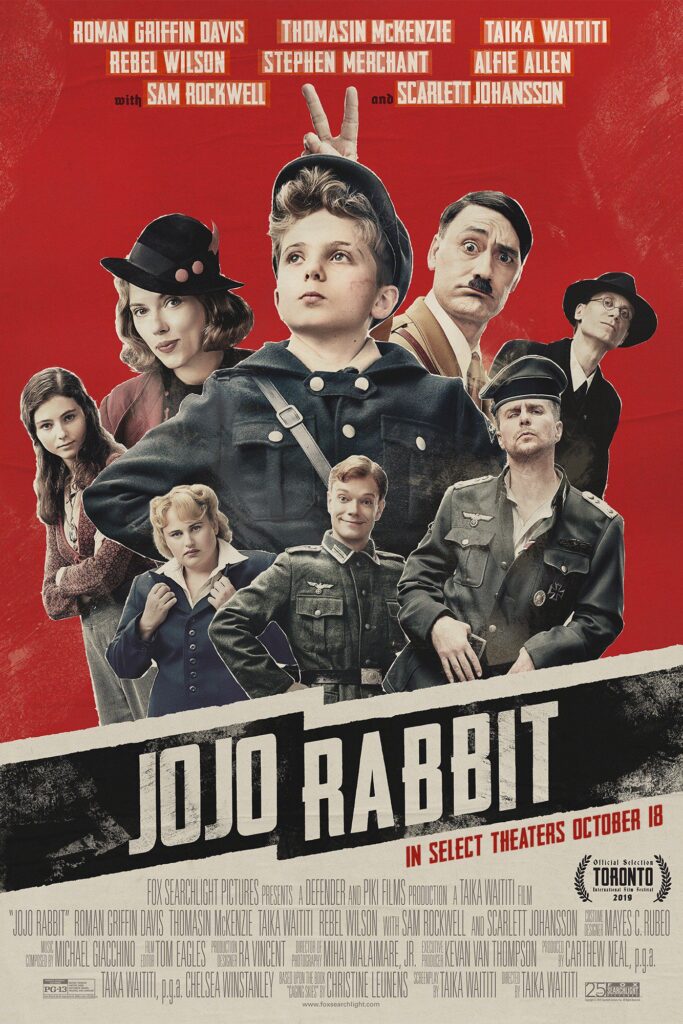GCSE Film Studies
GCSE Film Studies offers students the opportunity to watch, discuss and analyse a wide range of films; from a Hollywood blockbuster to an Independent Film, a film created in the UK to a subtitled non-English language film. Students learn how to decipher the decisions made by directors and what impact this has on an audience, linking the message of a film to the wider context of what was happening in the world at the time the film was created and/or set.
Additionally, students are able to put their learning into practice by completing the following coursework tasks:
- an original Screenplay that links to a specific genre
- a Shooting Script, demonstrating their knowledge and understanding of sound, cinematography and editing
- an evaluative analysis that compared their own ideas to the wider film industry
HorrorFest 2022
Structure of Assessment
For every area of the assessment, students will be required to analyse key sequences from a range of set-films.
Component 1 — Key Developments in US Film
Written Exam worth 35% of the overall GCSE (90 minutes)
Section A: US Comparison Study
Question 1 focuses on ‘Dracula’ (Browning, 1931)
Question 2 focuses on ‘The Lost Boys’ (Schumacher, 1982)
Question 3 is a Comparison Study essay of ‘Dracula’ (Browning, 1931) and ‘The Lost Boys’ (Schumacher, 1982)
Students could be asked about any of the following areas of study:
- Genre and Narrative
- Representation of Characters
- The Key Elements of Film Form
- Context (Political, Social, Cultural, Historical, Technological and Institutional)
Section B: Key Developments in Film and Film Technology
Question 4 focuses on the Key Developments in Film and Film technology timeline from 1895 to the present day
Section C: US Independent Film
Question 5 focuses on how a source of specialist writing influences the students’ understanding of the key themes of their set-film. Students will have the opportunity to choose between studying either ‘Whiplash’ (Chazelle, 2014) or ‘The Hate U Give’ (Tillman, Jr., 2018).
Students could be asked about any of the following areas of study:
- Key ideas from the source of specialist writing
- How the key idea has influenced their own opinion of the film
- Whether they agree or disagree with the source of specialist writing
- The Key Elements of Film Form
Component 2: Global Film — Narrative, Representation and Film Style
Written exam worth 35% of the overall GCSE (90 minutes)
Section A: Global film, produced outside the US
Question 1 focuses on ‘Jojo Rabbit’ (Waititi, 2019).
Students could be asked about any of the following areas of study:
- Characters and their Character Journey
- Genre and Narrative
- Narrative Structures
- Narrative Theories (Todorov’s Narrative Theory; The Theory of Binary Opposition; Propps’ Narrative Theory)
- The Key Elements of Film Form
- Context (Political, Social, Cultural, Historical, Technological and Institutional)
Section B: Non-English Language Film
Question 2 focuses on ‘The Wave’ (Gansel, 2008)
Students could be asked about any of the following areas of study:
- Characters and their Character Journey
- Representation of Characters
- The Key Elements of Film Form
- Context (Political, Social, Cultural, Historical, Technological and Institutional)
Section C: UK Contemporary Film, produced after 2010
Question 3 focuses on ‘Attack the Block’ (Cornish, 2011)
Students could be asked about any of the following areas of study:
- Film Style and Aesthetics
- The ‘look’, mood or atmosphere of the film
- The Key Elements of Film Form
- Context (Political, Social, Cultural, Historical, Technological and Institutional)
Component 3: Production
Non-Exam Assessment worth 30% of the overall GCSE
Students are required to complete the following three pieces of coursework as part of their N.E.A. work:
- Original Screenplay (800-1000 words) that demonstrates their knowledge and understanding of ONE of the following genres:
- Science Fiction
- Action
- Horror
- War
- The Teenage Film
- Shooting Script (approx. 1 page equating to 1 minute of footage) that demonstrates their knowledge and understanding of the following:
- Cinematography (including camera shots, angles and movement)
- Editing (including cuts, transitions, pace and order of edits)
- Sound (including dialogue, sound effects and music)
- Evaluative Analysis (750-850 words) that demonstrates their knowledge and understanding of the following areas:
- The aims of the genre film extract (the chosen genre of the production, its main audience)
- An indication of how key aspects from approximately three genre films have influenced the production
- An analysis of the production in relation to comparable, professional produced genre-films









